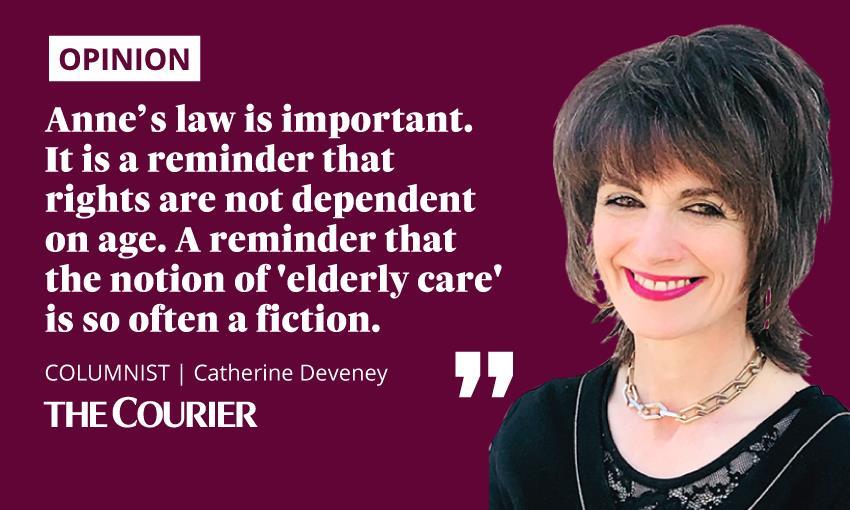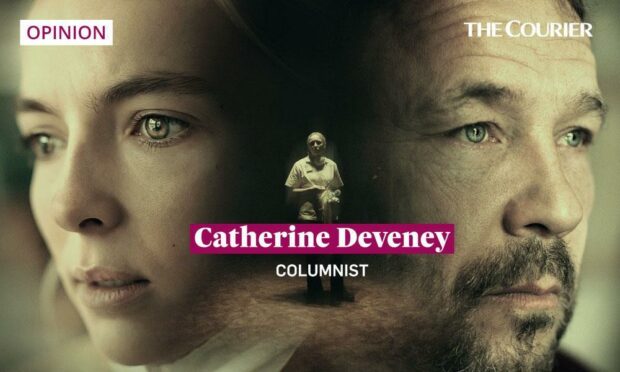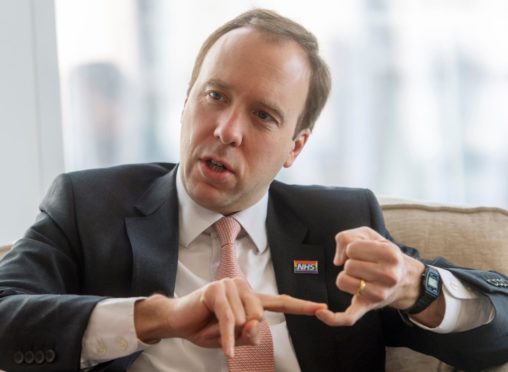I am tempted to say that the experience of watching Help, the Channel 4 film about the care home sector during the pandemic, is like being caught in a nightmare which you wake from, sweating and distressed.
But the analogy doesn’t really work because waking from a nightmare brings the knowledge that none of it was real.
At the end of Help, there is no such sweeping relief.
Imagination? Yes, but also reality.
As someone who writes fiction, I completely identify with novelist Kerry Hudson who once tried to describe the alchemy of fact and fiction.
“Yes, this is made up,” she said of her writing, “but this is also the most truthful thing I have to give you.”
 The Scottish Government is currently consulting on “Anne’s Law”, giving care home residents the right to a designated visitor – even in lockdowns.
The Scottish Government is currently consulting on “Anne’s Law”, giving care home residents the right to a designated visitor – even in lockdowns.
The proposal was brought by Natasha Hamilton, who was unable to visit her mother, Anne, during the pandemic.
It prompts examination of what went on in care homes.
More importantly, it demands that we analyse why it happened – and that analysis raises uncomfortable truths about societal attitudes to the elderly.
But we’ll come to that.
Where fact and fiction collide
All of us straddle the line between fact and fiction, belief and doubt, differently.
Help’s plot drifts in a way I found unbelievable, but there is a celebrated, 20-minute, single camera section early in the film that is devastatingly realistic.
Sarah, a young, dedicated care worker, is left alone on night shift. Her colleagues are off sick with Covid.
Sarah is wearing a black bin bag because there is no PPE.
Overwhelmed by fear and anxiety, she tries to get NHS help with a dying patient.
The ambulance service number rings out relentlessly.
Eventually a controller answers. No ambulances are available.
“You don’t care about us,” Sarah screams, before throwing the phone down and attempting to turn the dying man on his front to alleviate his breathing.
As Sarah’s distress grows, so, too, does the audience’s.
One of the most powerful scenes ever in a cinema & what a riveting performance by #JodieComer
“When did our lives stop being worth the same, eh” #helpchannel4 #Help
— Aida (@Aidaveeto) October 2, 2021
“I’m broken,” wrote one viewer on social media after watching.
Just like the system.
Care homes left vulnerable as Covid hit
“One of the things I am most proud of is the esteem people have held health and social care workers across the board.”
So said Matt Hancock in April 2020.
Fiction mirroring truth. Fact masquerading as fiction.
Care homes accounted for 40% of all deaths from Covid early in the pandemic.
Yet, when Covid tests were unavailable, even for doctors, Matt Hancock’s department based Covid figure on test results, not death certificates – a practice criticised in the British Medical Journal.
Patients were shoved out of hospital back to care homes without Covid tests.
Why?
Because care homes were less visible than hospitals. Less scrutinised. Infections soared.
Residents, like Anne, were left without loved ones in their most vulnerable moments.
Was one designated visitor per resident more dangerous than an army of unprotected staff?
Hancock’s consistent claims that carers were appreciated, and residents protected, deserves ridicule.
They were ignored.
Those working with society’s most vulnerable – children and the elderly – are valued least.
The average worker in homes for the elderly earns around £8.50 an hour.
They care. Society doesn’t.
Hospitals were centre stage during the Covid crisis. Quite rightly, doctors and nursing staff were revered.
But vital carers and home helps were largely uncelebrated.
Clap for carers? Looking back, the hypocrisy of all that, the emptiness of the superficial gesture covering utter chaos, makes you ashamed.
In his speech in April 2020, Matt Hancock introduced a “single brand” for NHS plc, with a “badge of honour” so that carers could “publicly and proudly identify themselves”.
There’s gratitude.
The Department of Health equivalent of a Blue Peter badge.
Elderly are voiceless in care home reality
Long after watching, I couldn’t shake off Help.
A completely unrelated interview with detective Colin Sutton about the 17-year reign of terror of “The Night Stalker”, who burgled and raped elderly women, suddenly explained my unease.
“If victims had been 18 to 35, instead of 68 to 95,the operation would have been better resourced,” he said.
If the victims had been young instead of old, society – and the Met police – would have cared more.
He might have been caught sooner. Brutal, unacceptable truth.
Anne’s law is important.
It is a reminder that rights are not dependent on age.
A reminder that the notion of “elderly care” is so often a fiction. ”
A voice for the voiceless,” one viewer wrote after watching Help.
I fear we are all so deaf to the elderly that they need not just a voice, but a megaphone.

